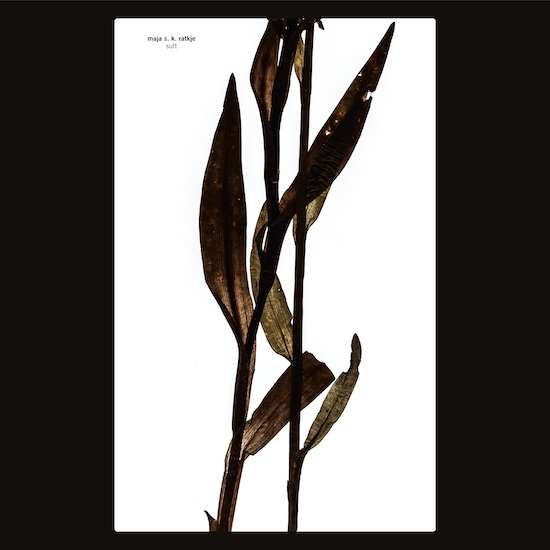The music presented here was, initially, for the exclusive enjoyment of those who attended Sult, a balletic interpretation of a Knut Hamsen novel, in Oslo last spring. While not necessarily constituting a tiny audience (it may be more than end up buying this album), that does amount to a rather narrow one. I for one am pleased that Maja S. K. Ratkje, having performed her soundtrack on an absurdly beautiful modified pump organ – stage right, each night – rerecorded it for the always-forward-thinking Rune Grammofon label, opening it up to those of us who aren’t Norwegian theatre patrons.
The organ heard here isn’t an especially ornate one, it appears: indeed, it might even have seen aurally better days. This lends a desirable element of challenging randomness to its creaky tones and dust-flecked drones. Ratkje also embellished it with several metal bars, curved steel sheets and chain links, as pictured here. UK sound artists Graham Dunning and Sam Underwood have recently built something visually and conceptually similar, the Mammoth Beat Organ, although that’s more generative. Ratkje’s own playing is central to how Sult develops, even when ‘Den sprættende bevægelse min fot gjør hver gang pulsen slår’ (all the titles are fragments of the novel’s original text) has its frantic chord-blurring and gabbling vocal abetted by a scrapyard of clanging detritus.
By the musician’s own self-created standards, via projects including noise duo Fe-mail and the improv-based Spunk, these compositions feel objectively palatable: existing at the fringes of pop-song structure, sure, but there are euphoric vocal refrains that serve as hooks, and playful organ melodies, threaded through pieces such as ‘Et hvitt fyrtårn midt i et grumset menneskehav hvor vrak fløt om’. In the same way high street evangelists are allowed to bellow at the public while someone standing outside New Look gargling death metal lyrics would be moved on, you wonder if the moments of atonal thud and junked cacophony on Sult feel implicitly acceptable because we know they were created as a ballet soundtrack. Maybe it even induced mild shock in the Oslo auditorium. Most importantly for this review, it thrives without its original visual stimulus.


